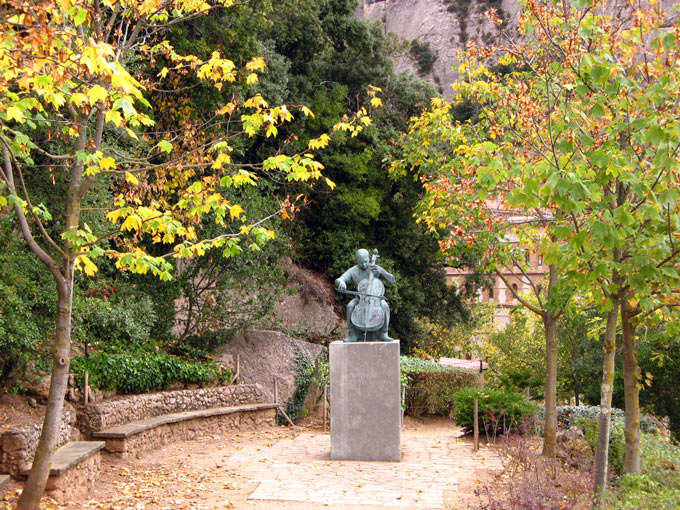The statue and the monastery have survived many disasters: the destruction of monastery buildings by Napoleon’s forces in 1811, the dissolution of monasteries and convents by Spanish rulers in the 1830s and Franco’s suppression of everything Catalonian in the 20th century --- not to mention forest fires and storms. Perhaps, that helps explain why Catalonians identify so closely with Montserrat for they are survivors, too.
Besides its religious and cultural importance, Montserrat has a spectacular mountain setting. For those who enjoy walking, there are a number of different trails available from the top of the funicular with expansive views of the surrounding countryside.
With only a few days left in Spain, we had little choice for weather. Our Tuesday travel day was dry but with a heavy overcast --- not the best for stunning photos. It was also very chilly. Wisely, we made no picnic plans; the Montserrat cafeteria was splendidly warm and cozy for all our needs and not a bit crowded.
For public transport to Montserrat, there is a choice between bus and train. We chose the FGC train because it offered frequent departure times from Plaça de Espanya. The ride to the valley below Monserrat takes one hour. From there, a rack railway or an aerial cable car transports passengers to the top in an additional 20 minutes.
From the valley floor, we rode up to Montserrat on the rack railway, aboard which the first five photos below were taken:
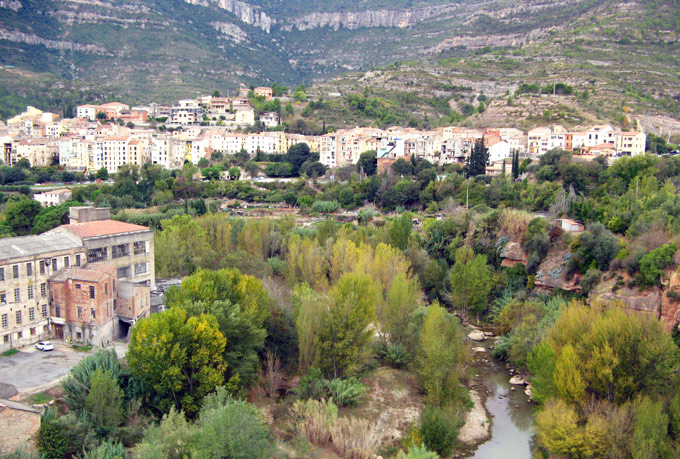
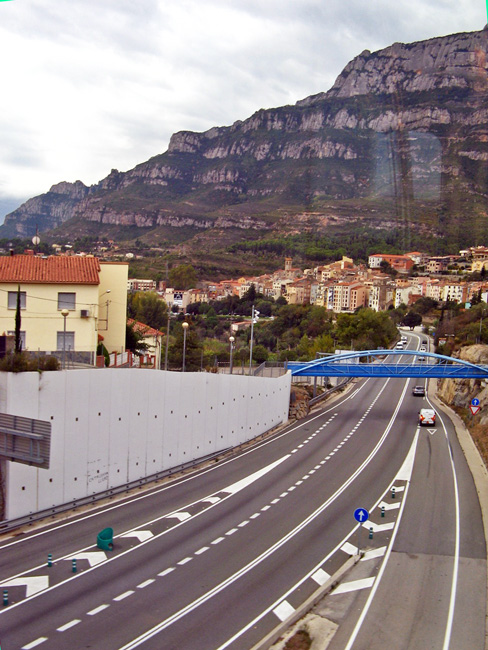
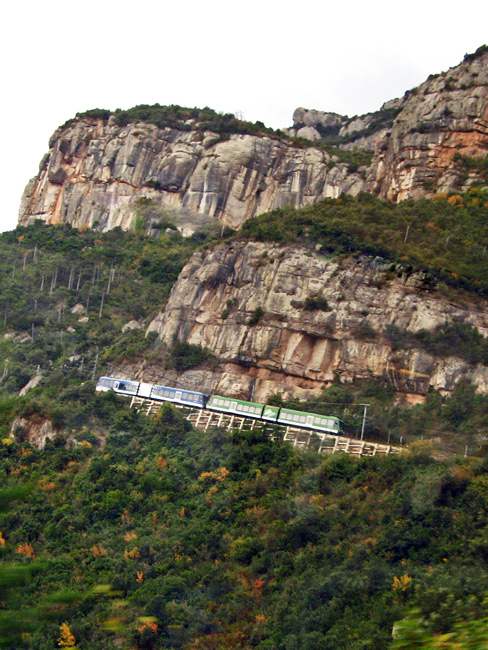
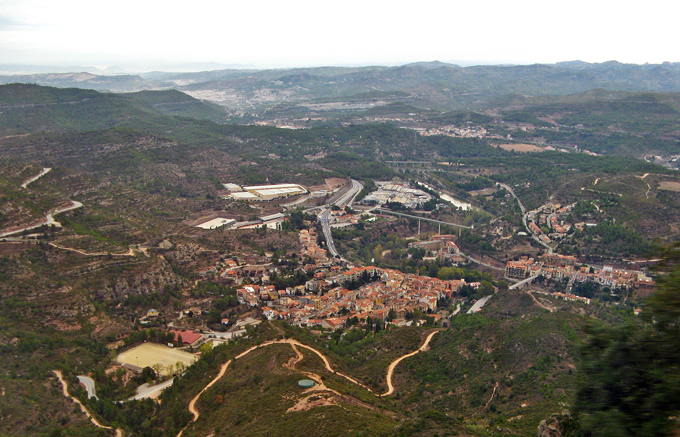
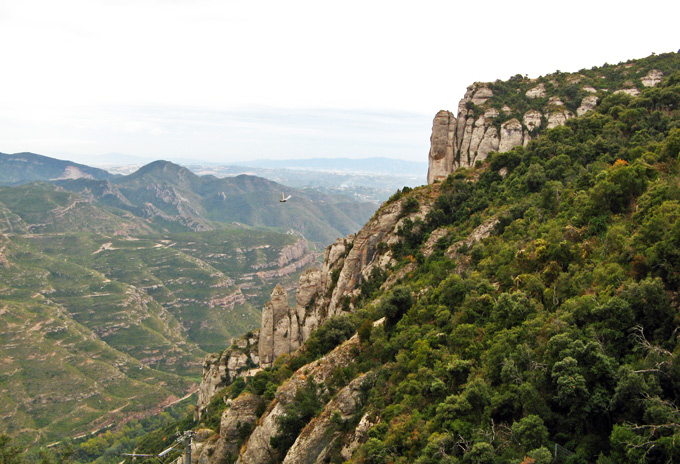
For a first-time visit, it is hard to be prepared for that initial sight:
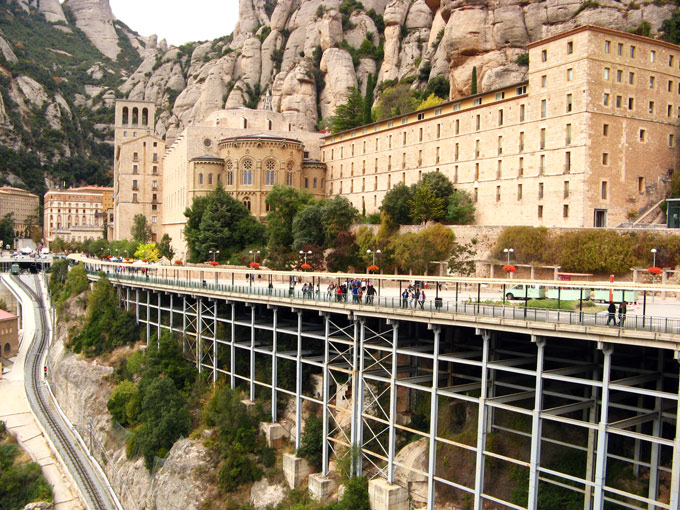
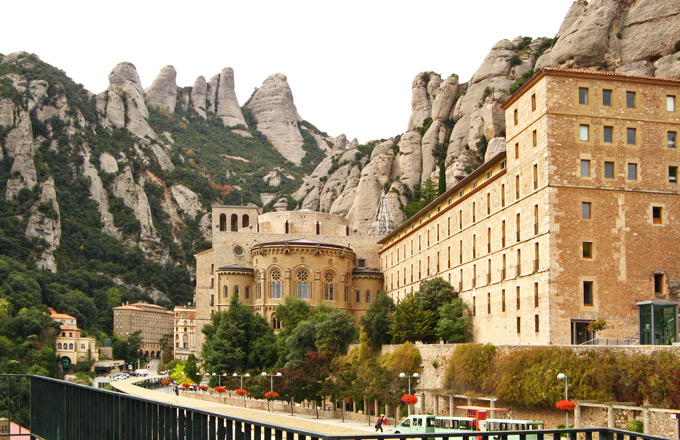
The main plaza in front of the basilica entrance is easily identified below ...
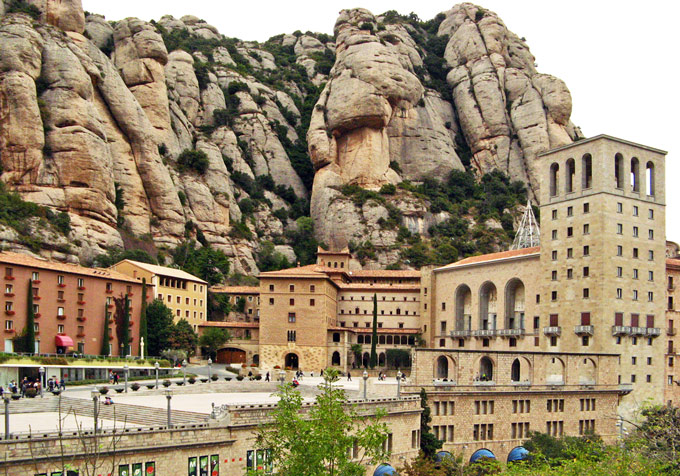
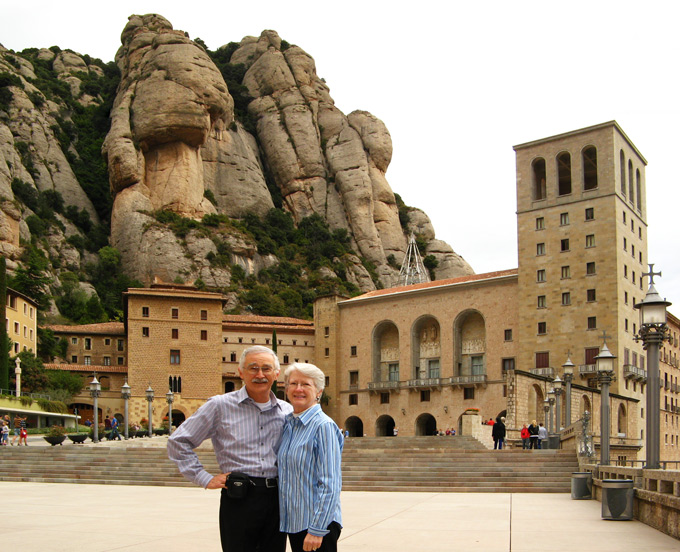
Moving closer to the basilica, we have the basilica entrance on the right and a cloister straight ahead. To our left is a public library, a reading room and the monastery’s private entrance:
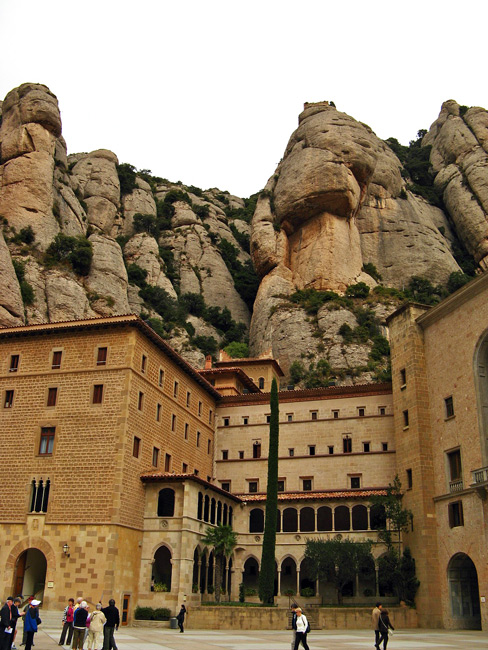
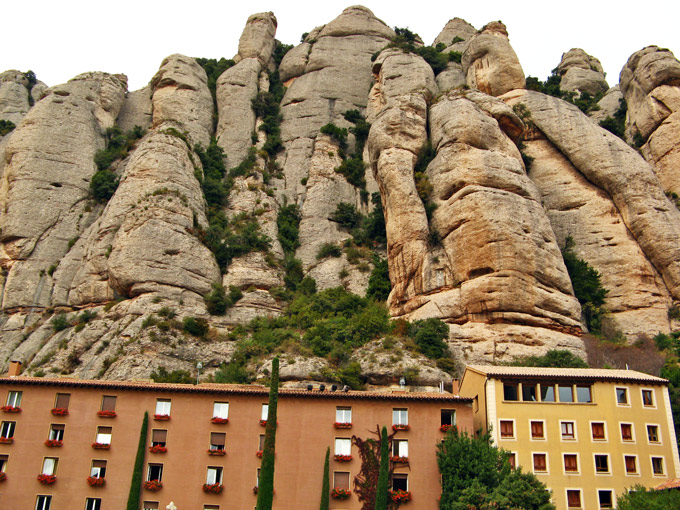
Proceeding through an arched passageway, we enter an atrium with the church entrance now straight ahead:
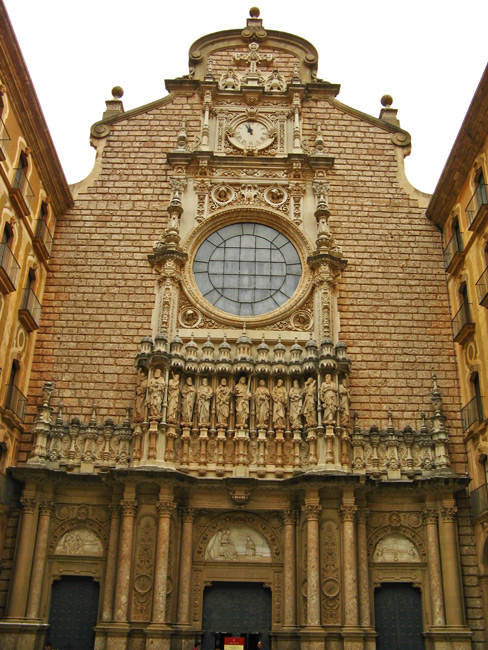
The subdued lighting inside and the heavy overcast skies led to poor photos. Consequently, the next three were supplied by Internet sources:
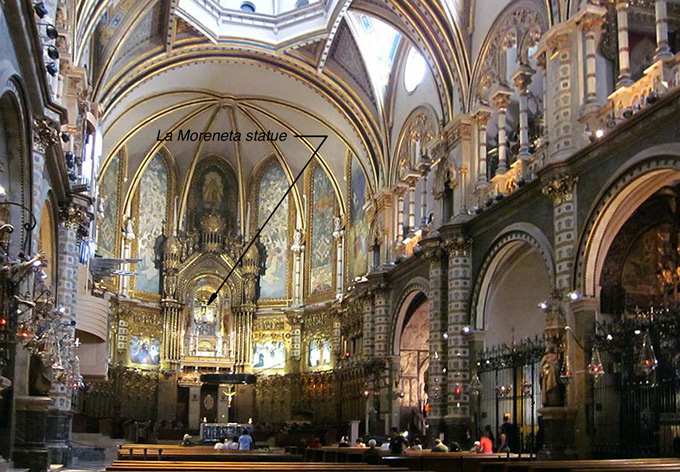
In this photo, two people are standing in front of the statue, facing it:
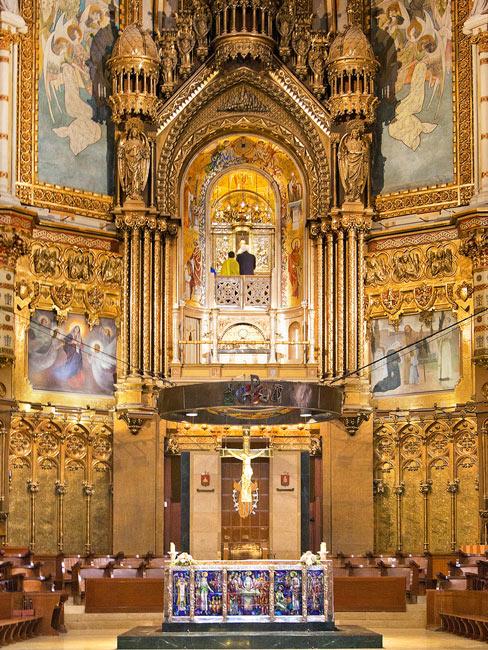
La Moreneta is a small wood statue of Mary (and Jesus) found in a cave nearby in the 12th century. She is the patroness of Catalunya and the top attraction at Montserrat. While “Moreneta” is translated as “black” in English, we are told that in Spanish it means “tanned”:
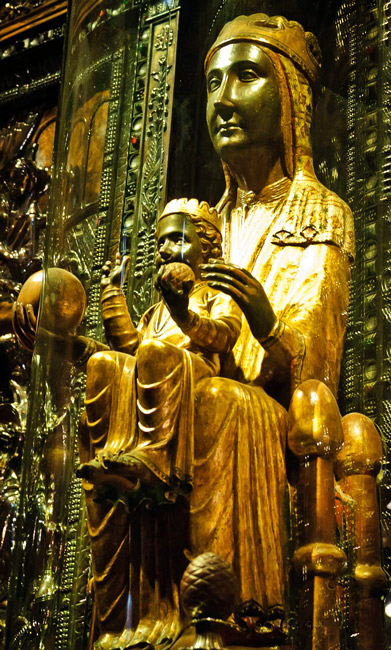
The statues are enclosed in a glass or plastic case with a small opening for part of the orb and Mary’s right hand. The opening allows pilgrims to touch Mary’s orb as they stand in front. After they visit, their exit along the outside of the church is illuminated by hundreds of colorful votive candles:
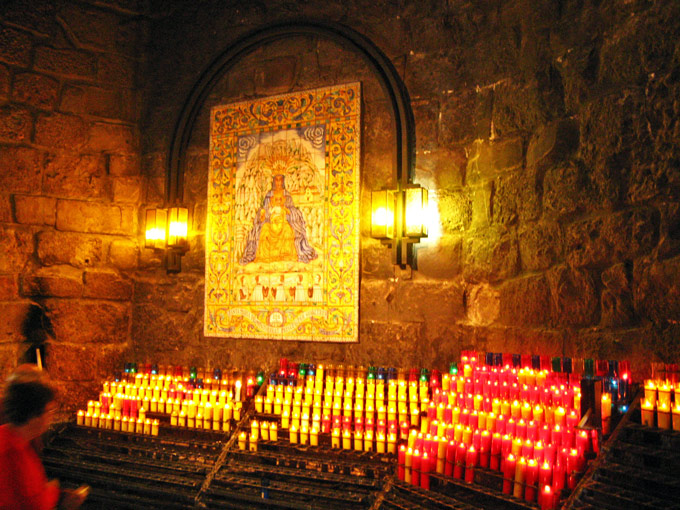
Leaving the basilica, our view of the jagged Monserrat peaks is perfectly framed by an archway:
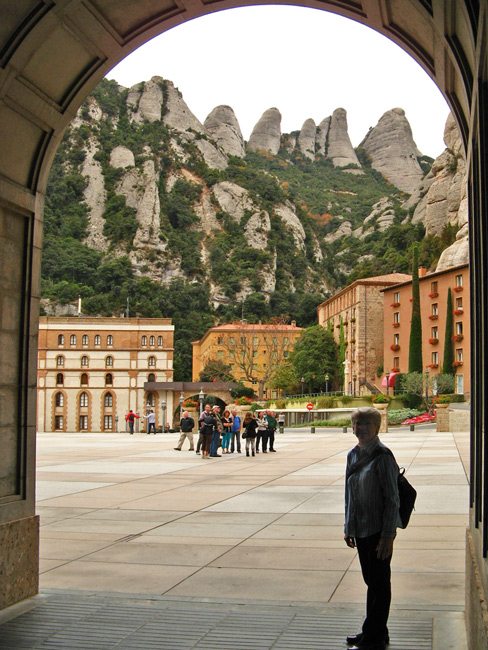
Next on our agenda was the Sant Joan Funicular and a downhill walk back to the monastery:
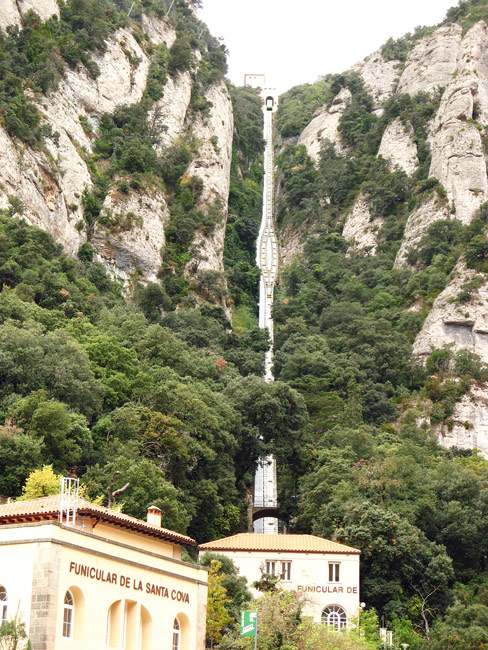
Despite the steep incline, the ride was smooth and, before long, we were at the top. No surprise, the machinery was Swiss made:
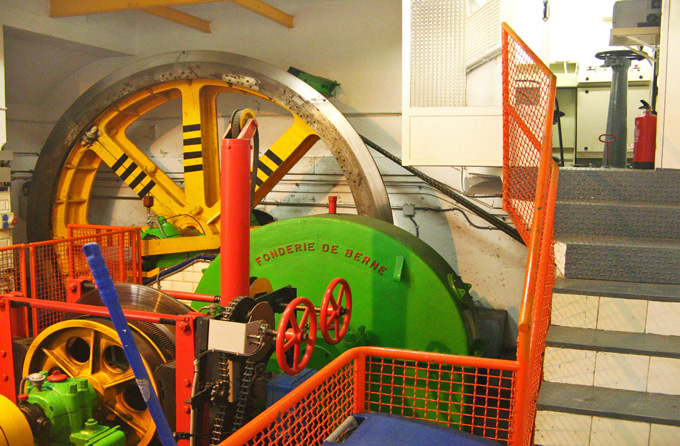
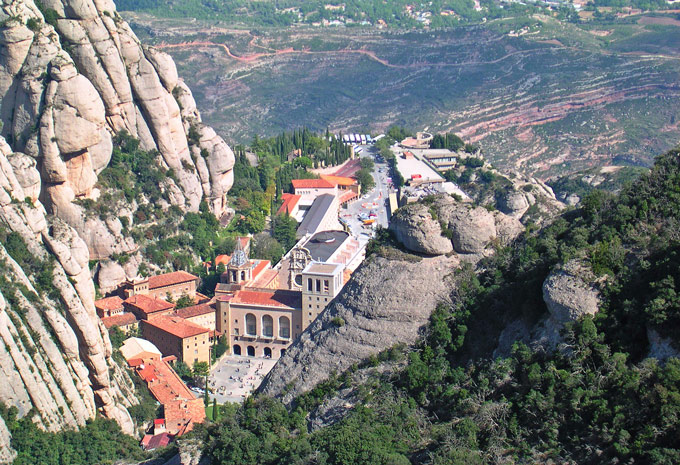
The walk back to the monastery took us about 45 minutes. Thankfully, the mostly-rocky road we descended was paved in sections that were unusually steep. The views were out of this world:
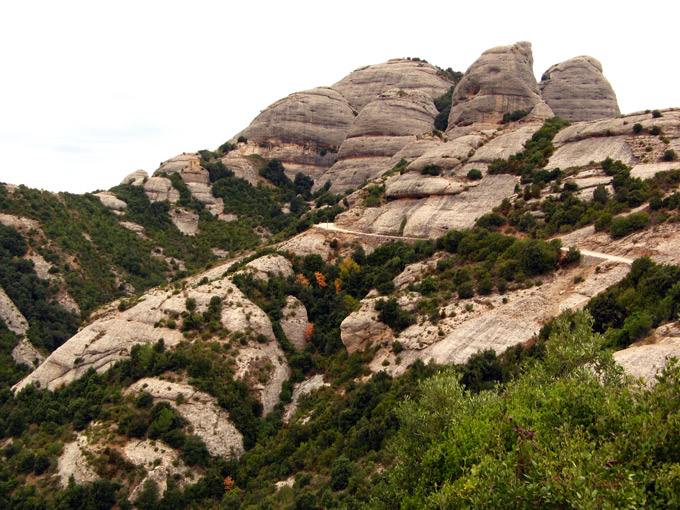
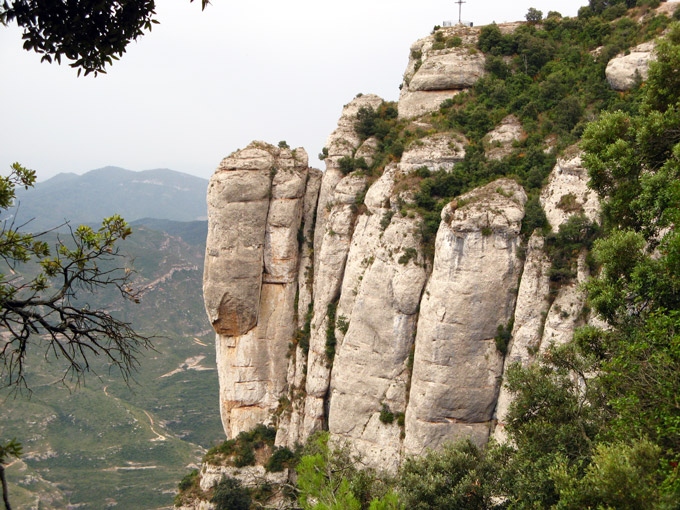
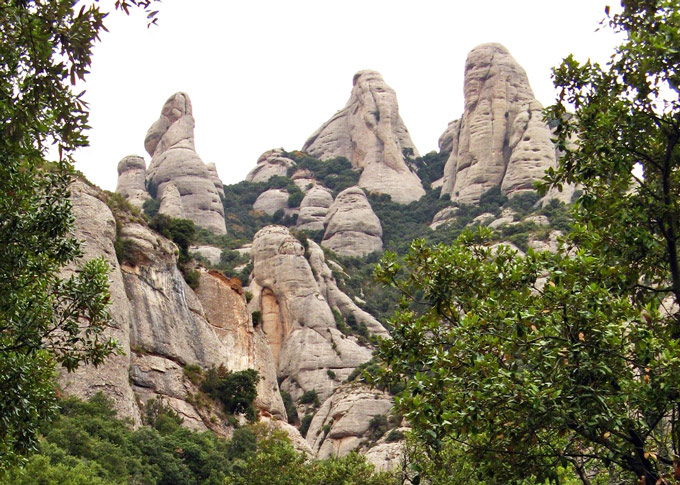
Almost back at the monastery, our day was brightened by this autumn scene just off the trail. It is a tribute to Pablo Casals, the famed cellist and conductor, reminding us that, he, too, was a proud native of Catalunya. Such spirit and independence these Catalonians possess! You cannot help but be impressed by their cultural heritage and admire them for nurturing it.
